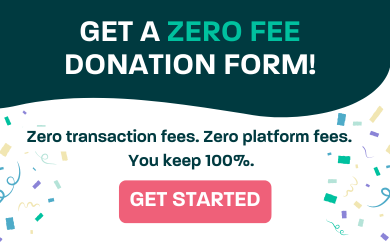
Real-time Email Marketing Campaign

Smart Segmentation Based on Giving History
Because you only have your donor’s attention for about 2-7 seconds, it’s important that email marketing makes an impact and drives supporters to act right away with compelling, urgent and relevant messaging.
To achieve this, Greenpeace used email segmentation to generate customized content that acknowledged each supporter’s unique giving history.
Here’s how they segmented the groups.
| Prospect | Never donated before | Message: You already support Greenpeace in many ways, whether it’s signing petitions or sharing campaigns on Social media. I’m hoping you’re ready to take the next step and join Greenpeace with a $15/month donation. |
| Recent donor | Donated in the past 30 days | Message: You’ve donated to Greenpeace really recently—thank you! We’re so grateful for your support. I’m hoping you’re ready to take the next step and join Greenpeace with a $15/month donation. |
| Last year donor | Donated in the previous year | Message: You donated to Greenpeace last year—thank you! We’re so grateful for your support. I’m hoping you’re ready to take the next step and join Greenpeace with a $15/month donation. |
| Consecutive donor | Donated in both the previous two years | Message: You are one of our most loyal donors and support Greenpeace year after year. We’re so grateful. I’m hoping you might consider joining Greenpeace with a $15/month donation to continue to power the change our planet needs. |
| Lapsed monthly donor | No longer an active monthly donor but was in the past | Message: I know you joined us as a monthly donor in the past and we are so grateful for your support. I’m hoping you will consider re-joining Greenpeace with a $15/month donation. |
Analyze and Adapt
Segmentation is important for the personalization of emails but it is also crucial for results. Greenpeace found that through segmentation a recent group of donors was willing to give twice in 30 days. They also discovered what specific types of messages resonated the strongest with them.
Similarly, they learned that their non-donor segment responded best to emails covering campaign issues such as ocean health or the tar sands. It was not just the conversions that made this campaign a success, but also the insights that could be funneled for future actions.
Here is one of the emails they sent:

Campaign Video
The Results
Greenpeace Canada increased monthly giving campaign results by 332% since 2018 and acquired 808 new monthly donors.
Greenpeace Canada also ran another monthly giving push during #GivingTuesday in 2020 and acquired another 160 new monthly donors. This showed that even during a global pandemic, many people were still ready and willing to give.
Lessons Learned
- Timing is important. Running a campaign early in the calendar year allowed them to leverage the momentum of year-end giving. Also asking recent donors to upgrade their gifts, when the cause and commitment were still top of mind, was very effective.
- Setting a reasonable deadline. Deadlines create urgency and drive supporters to take action.
- Communicating the right goal. Greenpeace clearly asked supporters to be part of what they were trying to accomplish.
- Using segmentation. Personalizing emails helps increase response rates.
- Being agile. Their real-time email campaign allowed them to quickly respond to current events.
- Using multi-channels. Even though email was the key driver of communication for Greenpeace, updating their donation page with campaign messaging and adding a pop-up on their homepage, to promote their ask on social media, helped yield more conversions.
Start Your Own Monthly Giving Program
Want to start a monthly giving program of your own? Sumac Donations allows you to segments contacts, send mass email, collect monthly donations on your website, and send receipts – so managing a monthly giving programs is easy! Contact us today to get started.


